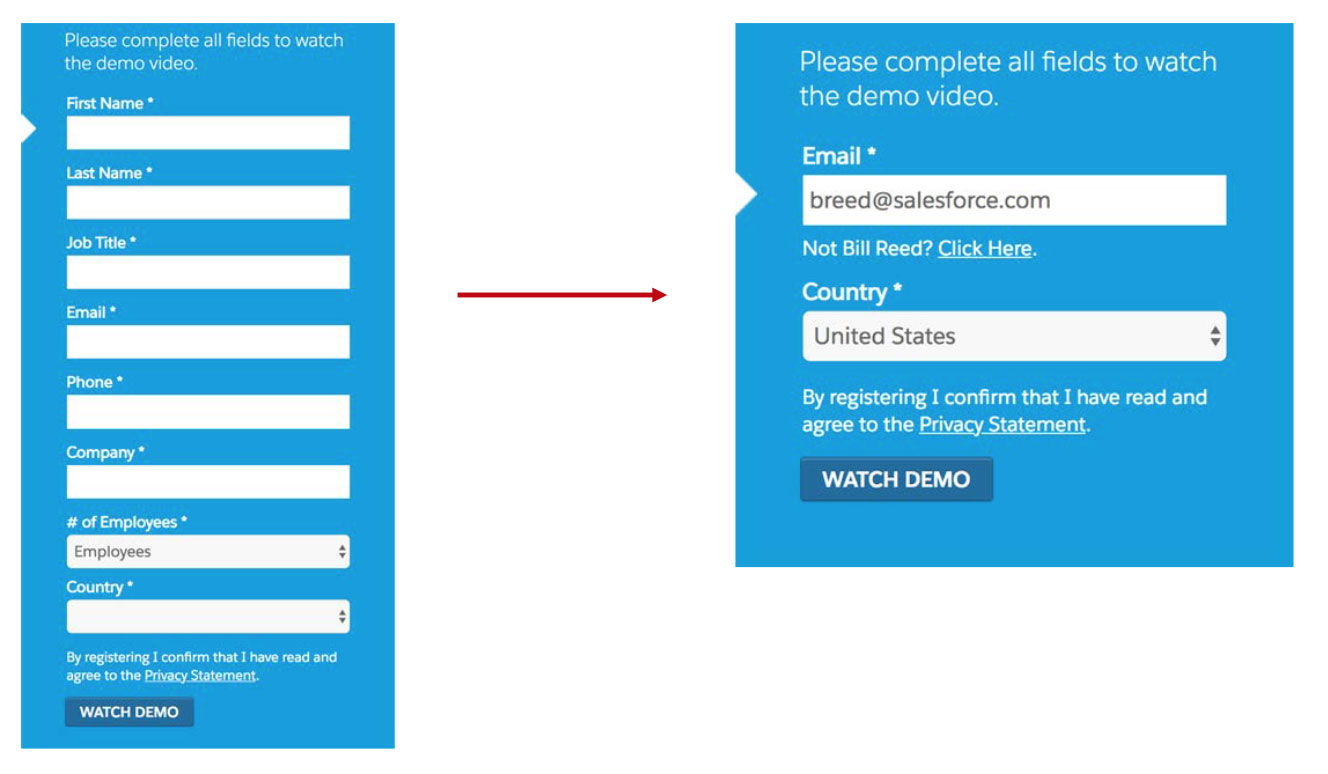If you’re familiar with Salesforce, it’s highly probable that you have already come across with Pardot. Yes, I know what you thought… what the hell is Pardot? The name says little, but it’s a rather powerful tool.
Salesforce describes Pardot as a “B2b Marketing Automation software platform that provides a full solution that helps marketers create meaningful connections, generate more pipeline, and empower sales to close more deals.”
Pretty cool, huh? But the real question remains: how can we put that into practice?
Marketing Automation – what?
Before diving in, let’s review what Marketing Automation is. Marketing Automation is a software platform that helps automate marketing and sales process to generate more leads, close more deals, and accurately measure marketing activities.
And that is what Pardot can do for your business!
Pardot enables organizations to track and measure the effectiveness of their communications, gain insight on user behavior, and personalize content across campaigns based on any number of specific criteria. Pardot is like a “Big Brother” of digital marketing (I’ll explain this later)! ?
Clear as mud? Don’t worry… let’s detail the aspects of this marketing automation system and how can it be used with Salesforce.
What is Pardot and what processes can I automate?
The ultimate goal is always to communicate at the right place, right time… right?! How? Here are the main features that helps organizations automate and better communicate with your Leads and Clients:
1. Tracking visits and real-time alerts

Would you like to know and be notified whenever a certain lead visits your site? Yeah, with Pardot this is possible. Plus, you will know which pages he browsed, and how long he stayed on each one of them.
This is possible because when a user visits the website, he acquires a cookie that allows us to track his behavior. This is why we were calling this feature “Big Brother”… because he’s watching you! The system sees everything users do on our website, in real time, all the time.
With this system, over time, you’ll get information about the behavior of your leads to improve your marketing and sales strategy to close more deals.
And the best part is, whenever a lead visits a key page, your sales team can act immediately to close the deal.
2. Identifying high quality Leads through Scoring and Grading:
When it comes to identifying the very best opportunity deals, Pardot has a secret ingredient: the points and grading system.
This feature does the job of scoring the main activity, such as whenever they visit a page, fill out a form or participate in an event.
The grade system is based on the adequacy of the perspective of your product or service – demographic requirements, job description or another qualitative characteristics.
So, everytime a potential customer makes the perfect fit with your business and does several activities that make him score, it’s time to qualify them and pass the contact on to the sales team.
3. Nurturing prospects and customers:
Traditionally, in marketing and sales, it is often the case that teams waste a lot of time following up and talking to prospects who are not ready to buy. With Pardot, this is how we save a lot of time. The sales team acts only on hot leads and the marketing team stays focused in creating a high quality and targeted content.
And let’s not forget about our client. It is an important part of our pipeline. We want to continue to engage with him so he can recommend us to his peers and, whenever he needs another product/service, he will remember that we can help.
4. Make Landing pages your own:
Gathering leads isn’t an easy task. Much less when we have an ugly and difficult to use interface. So, it’s important to design and build landing pages that not only reflect your image, but are also user friendly. It’s essential that they are mobile friendly and have small and easy to fill forms that match the value of the content you are offering.
But, whenever we have high-value content that allows us to better segment the prospect, we need to create longer forms that allow us to retrieve more useful data.
For these special cases, Pardot offers a noteworthy feature named “Progressive Profile”:

This feature allows you to customize your forms to restrict only a few mandatory fields. After a prospect fills out a form, Pardot remembers that data, and the next time he fills out another one, the fields in which we already have the data no longer appear. Cool, huh?!
5. Plan, execute and launch Email Marketing Campaigns like a pro!
Email marketing is a crucial component of marketing. As much as the experts talked about the end of email marketing, the numbers shows just the opposite! In fact, according to a McKinsey & Co study, email marketing is still 40 times more effective at reaching your target client than Twitter or Facebook.
Pardot offers several features to make you an email marketer! Besides being able to create your own layouts and templates, it has an intuitive and easy-to-use editor. If you don’t have a lot of technical knowledge, no problem. The software comes with several pre-defined templates that can be used.
Managing your lists is easier than ever. Besides accessing all contacts available in other Salesforce applications, Pardot allows you to segment your contacts based on their behavior. This way, you can create smart campaigns that are basically self-managed.
6. Easy-peasy flows with Engagement Studio
Pardot offers several automation rules and completion actions that allow you to greatly automate your marketing processes (such as sending email after visiting a page on the website or adding that prospect to a segmentation list after filling out a certain form). But Engagement Studio is even better! This is an intuitive marketing automation tool, which is a more complete version of an email drip program. Engagement Studio allows you to send follow-up emails, create a logic-based nutrition campaign and test scenarios to see how a potential customer can navigate the path.

It looks difficult to use, but it is actually intuitive. Engagement Studio is a way to send emails to a list of potential customers, see how they interact with them and react differently based on how they interact with each email on the drip.
This is an automated sequence of messages that can change based on the logic you create. This allows organizations to create automated programs that engage the customer at every step of the customer journey.

7. Reporting and ROI:
None of this makes sense if it isn’t measurable, right? We don’t want to stab in the dark … we want to create, test and measure the success of all marketing actions.
Because, not only allows us to save money on ineffective actions, it also allow us to frequently adjust our strategy to make more of the resources we have and thus close more deals. With the Pardot, we measure everything that is being produced and, when we look at the sales results and connect the points, we get the true return on investment (ROI).
A bridge between marketing and sales
Besides being a tool designed to synchronize seamlessly with Salesforce, Pardot is the perfect bridge between marketing and Sales.
With Pardot, the marketing team attracts the potential customer, predicting their sales path and thus directing their communication based on their behavior. This is how Marketing is able to assess how prepared this potential customer is to buy and thus direct all the opportunities with greatest potential to Sales. When a salesperson approaches a potential customer, they already have a handful of information that will help them do more business.
But this bridge doesn’t end here. Pardot, in alignment with sales, should nurture current customers with content that will grab them even more. Upselling is easier than ever ?
So, what’s the difference between Pardot and Marketing Cloud?
That’s not what Marketing Cloud is supposed to do? Well, yes and no.
Let me explain. Pardot and Marketing Cloud have a lot in common but are positioned for different sort of audiences. Pardot is positioned for B2B, while Marketing Cloud is more towards B2C. The biggest difference is in the processing and sales cycle: smaller databases with a more complex sales process would better be approached via Pardot and larger databases with less complex sales cycles with Marketing Cloud.
Different audiences need different tools to better communicate with each one of them. Pardot is more institutional oriented, while Marketing Cloud focus in 1:1 communication.
And they do not compete with each other. In many cases organizations use both. Every company should analyze their sales process and evaluate which option is best for their business.
A smarter way of doing business
Yeah… this is what we all want: work smarter, not harder! With Pardot, especially if integrated with Salesforce CRM, you can finally unify the cycle from lead generation, to lead nurturing, to closing, and finally to customer delight. But keep in mind that all these capabilities will only work if there is a great effort by the organization to feed this tool! Generate good content, with meaningful messages that will make your client a true ambassador for your business.
What about you? Have you ever worked with any marketing automation tool? Hope this article helped you understand what Pardot is. If you still have any question, just send me a message.





